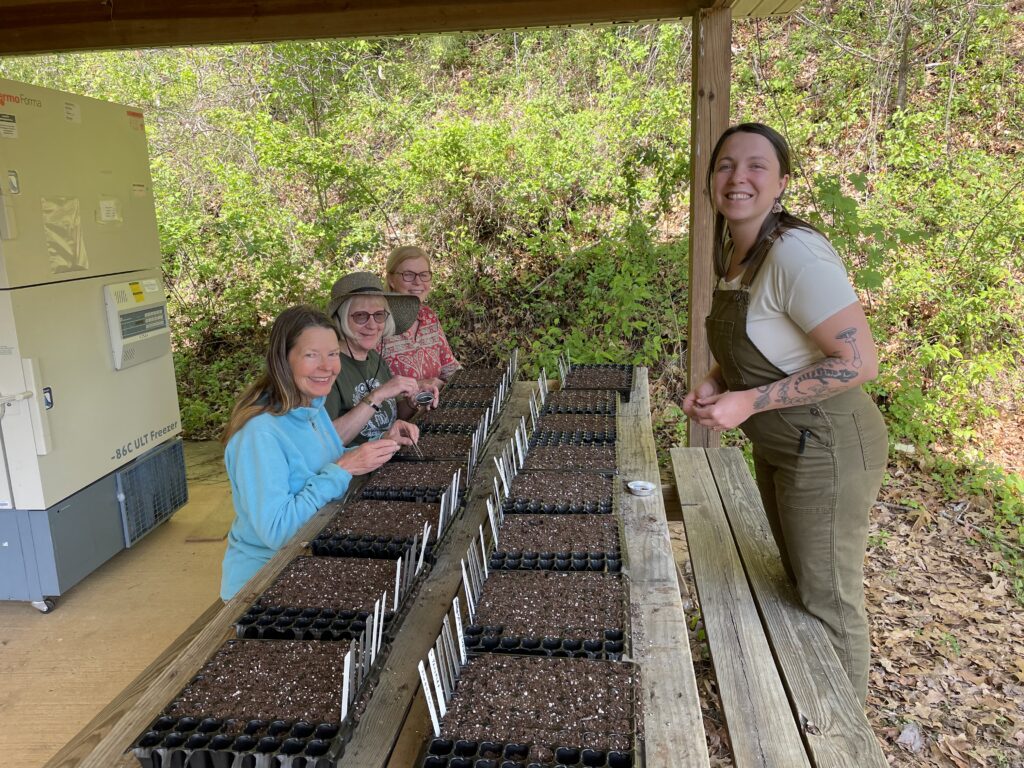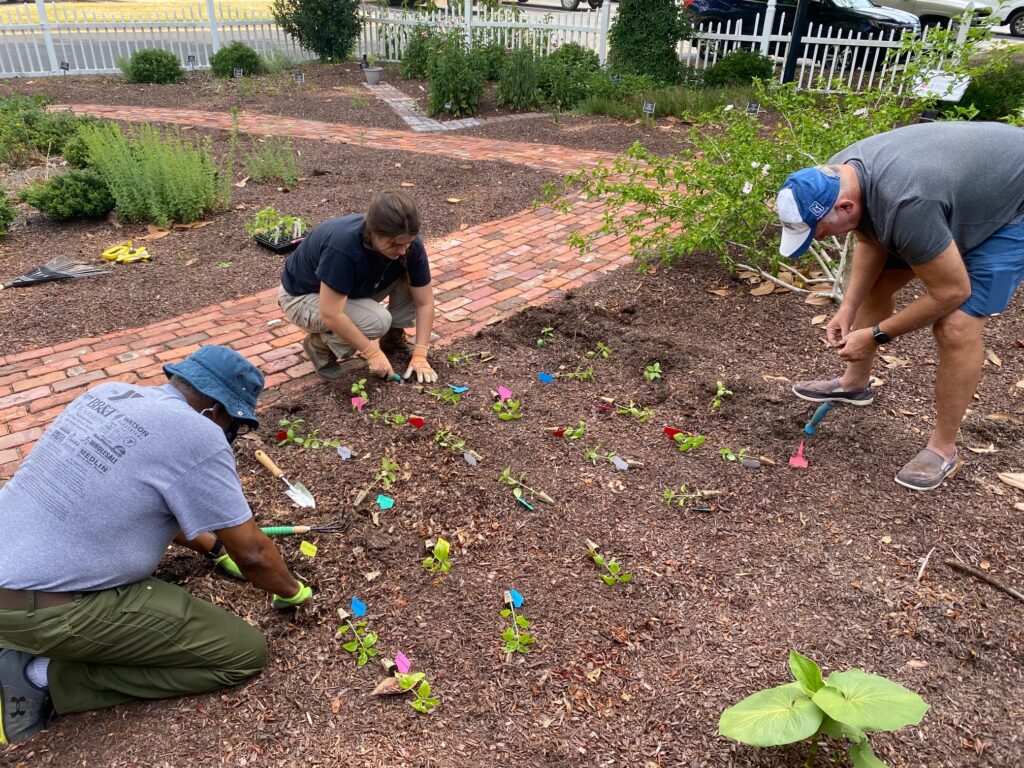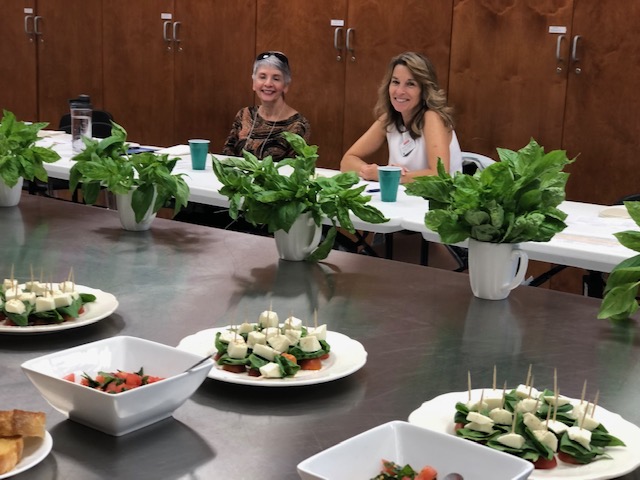Master Gardener℠ Volunteers Participate in Second Year of Basil Downy Mildew Trial
go.ncsu.edu/readext?900409
en Español / em Português
El inglés es el idioma de control de esta página. En la medida en que haya algún conflicto entre la traducción al inglés y la traducción, el inglés prevalece.
Al hacer clic en el enlace de traducción se activa un servicio de traducción gratuito para convertir la página al español. Al igual que con cualquier traducción por Internet, la conversión no es sensible al contexto y puede que no traduzca el texto en su significado original. NC State Extension no garantiza la exactitud del texto traducido. Por favor, tenga en cuenta que algunas aplicaciones y/o servicios pueden no funcionar como se espera cuando se traducen.
Português
Inglês é o idioma de controle desta página. Na medida que haja algum conflito entre o texto original em Inglês e a tradução, o Inglês prevalece.
Ao clicar no link de tradução, um serviço gratuito de tradução será ativado para converter a página para o Português. Como em qualquer tradução pela internet, a conversão não é sensivel ao contexto e pode não ocorrer a tradução para o significado orginal. O serviço de Extensão da Carolina do Norte (NC State Extension) não garante a exatidão do texto traduzido. Por favor, observe que algumas funções ou serviços podem não funcionar como esperado após a tradução.
English
English is the controlling language of this page. To the extent there is any conflict between the English text and the translation, English controls.
Clicking on the translation link activates a free translation service to convert the page to Spanish. As with any Internet translation, the conversion is not context-sensitive and may not translate the text to its original meaning. NC State Extension does not guarantee the accuracy of the translated text. Please note that some applications and/or services may not function as expected when translated.
Collapse ▲Introduction
Basil Downy Mildew (BDM) has had a devastating effect for both commercial and home growers on what once was considered to be an easily grown culinary herb. Here’s what causes this disease, and the results of recent research trials with Master Gardener℠ Volunteers in North Carolina to find good-tasting BDM-resistant varieties.
BDM is caused by a pathogen called Peronospora belbahrii, first confirmed in Florida in 2007. Sweet basil (Ocimum basiilicum) is its favorite host. BDM spores are carried by the wind, not soil-borne. The spores don’t survive North Carolina frosts, but spend their winters in frost-free locations or in warm greenhouses. Every summer they slowly come our way on warm breezes, traveling long distances until arriving in WNC in mid-to late summer. The spores land on plants and are most pervasive during wet, humid periods. BDM can also be transmitted via infected seeds or seedlings.
What to Look For
The first symptom of infection is a yellowing between the veins on the tops of older leaves; brown spots follow. Sporulation (fuzzy, powdery-looking grey areas which change to purple-brown) appear on the underside of leaves that match yellow areas on the top. The dark spores spread quickly and the leaves fall off. The entire plant generally dies within a couple of weeks.
BDM is a type of water mold, not an actual fungus, so fungicides are not effective. The best cultural methods to prevent BDM include: planting a resistant variety; planting in full sun; and avoiding wetting the leaves when watering.
Basil Downy Mildew Research Project
Master Gardener Volunteers from 22 counties in North Carolina participated in research trials in 2021 and 2022. Five BDM-resistant basil varieties (Prospera, Obsession, Devotion, Passion, and Thunderstruck were included, although other resistant varieties are available) were grown alongside the very popular Genovese (which is susceptible to BDM). Different Haywood County participants saw BDM in their trial plots in both years, and observed that all five resistant varieties were good at avoiding this disease.
In addition, blind taste tests were held in 2022 with all five resistant varieties, to find an equivalent flavor profile to Genovese. These tests were done using identical recipes for Caprese salad and Bruschetta. Prospera was judged to be the favorite followed closely by Obsession. New developments using Prospera include compact forms and a large leaf hybrid. Check seed catalogs for those that might grow best in your own garden.
Written by: Julie Taylor, Master Gardener Volunteer, Haywood County

Haywood MGVs seed basil for the start of the 2022 Trial Season. Photo credit: Inga Meadows

Wilson County MGVs planting basil. Photo credit: Cyndi Lauderdale

Chatham Co. MGVs participate in the basil taste test. Photo credit: Matt Jones




